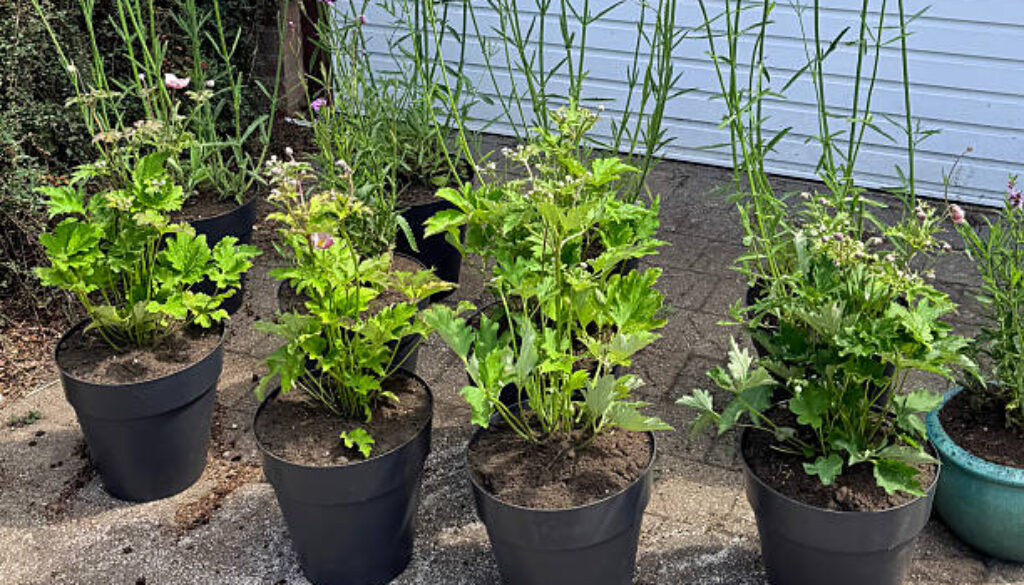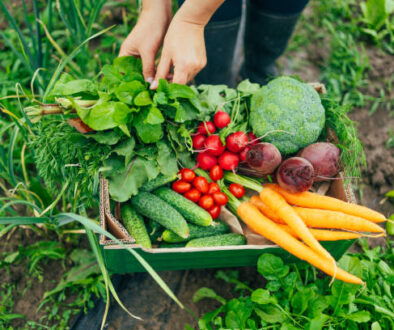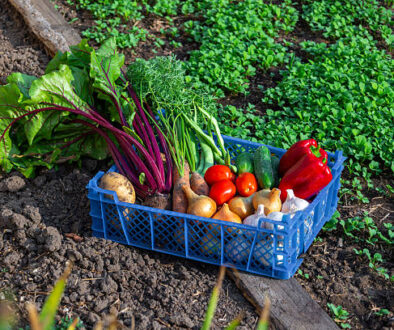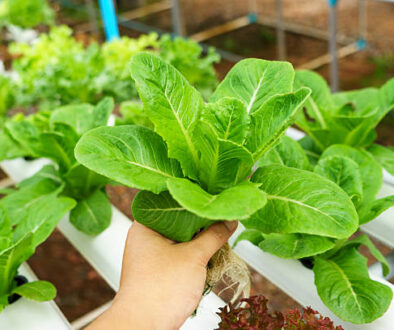How to Create a Peaceful Healing Garden Filled with Medicinal Herbs As a Beginner
This post may contain paid and/or affiliate links. I may earn a small commission at no extra cost to you.
Want a calm space that also helps you feel better? I’ll show you how to start a simple medical garden at home.
You’ll set up a small healing herb garden with easy plants you can actually use.
I’ll keep steps clear, you pick what fits your space, and we grow at your pace.
Wonder which medicinal plants work for beginners? I share my favorites and how to care for them without all the stress.
You build a cozy healing garden, and I guide you so you don’t waste time or money.
Ready to plant a mini medicinal herb garden that supports your daily wellness?
Start With a Simple Plan
You’ve already picked one, right? You want calm and wellness in one place.
Choose Your Main Purpose
Do you want tea herbs for stress relief, a few soothing aromas, or simple first-aid plants?
Pick one main purpose, then add a small backup goal. When you focus, you save money, time, and energy.
Pick the Best Location
Look for 4–6 hours of sun, easy water access, and a path you actually use.
You stick with care when the garden sits close to your door.
Test the spot by standing there at different times and noticing light, wind, and noise.
Decide on Beds or Containers
Use raised beds if your soil stays heavy or rocky. Go with containers if you rent or you only have a patio.
Mix both if that fits your space. BTW, containers kinda shine for beginners because you control soil quality from day one.
Related:
- 10 Healing Garden Design Tips for a Thriving Medicinal Herb Garden
- 11 Herbal Garden Companion Planting Secrets for Stronger Medicinal Plants
- The Main Benefits of Having a Medicine Garden in Your Backyard
Beginner-Friendly Herbs
I suggest a small mix that covers calm, tummy comfort, and basic skin care.
You grow 5–8 plants first, then add more after a season. Sound doable?
Lemon Balm (Melissa officinalis)
Lemon balm smells bright and lifts a tense mood. It grows fast, spreads gently, and loves partial sun.
Snip young leaves for tea and strip any flowers if you want more leaf growth.
Peppermint or Spearmint (Mentha spp.)
Mint cools tummies and freshens breath. It spreads like a boss, so plant it in a container. Water it well and cut it often, and it rewards you with thick, fragrant growth.
Calendula (Calendula officinalis)
Calendula brings sunny blooms and supports skin comfort. It thrives in most soils and keeps blooming if you snip flowers every few days. Dry the petals for salves, bath soaks, or tea blends.
Chamomile (Matricaria chamomilla)
Chamomile offers gentle calm and sweet apple scent. Start with seedlings if seeds feel fussy. Harvest small blooms when they open, then dry them on a screen in a warm room.
Lavender (Lavandula angustifolia)
Lavender brings calm with its scent alone. Plant it in well-drained soil and give it full sun. Trim lightly after flowering to keep a tidy shape and steady growth.
Thyme (Thymus vulgaris)
Thyme supports the breath and flavors food. It stays compact, handles heat, and asks for good drainage. Clip stems often to keep it low and lush.
Echinacea (Echinacea purpurea)
Echinacea adds bold flowers and pollinators. Give it sun and average soil. Let some heads dry for seeds and winter interest.
Design for Peace and Ease
You build a healing space with simple choices. Think comfort, not perfection.
Keep a Calm Layout
Create one clear path. Group plants by height: low herbs in front, mids in the center, tall anchor plants in back. Repeat two or three plants for a steady rhythm your eyes love.
Add Sensory Anchors
Place a small fountain, wind chimes, or a smooth bench. Use round pots and soft shapes to relax the space. Do you notice how curves slow your pace?
Welcome Pollinators
Tuck in alyssum, borage, or yarrow for nectar. You invite bees and butterflies, and your garden feels alive. Add a shallow water dish with pebbles for safe landings.
Soil, Water, and Feeding Made Simple
Healthy soil makes work easy. You set it up once, then top it off each season.
Build a Light, Draining Mix
Aim for equal parts compost, high-quality topsoil, and coarse sand or perlite.
Mix in a handful of slow-release organic fertilizer at planting time.
If your native soil drains well already, blend in compost and call it good.
Water With a Rhythm
Check soil with your finger. Water when the top inch feels dry. Give deep drinks, not light sprinkles, so roots grow strong. In summer heat, drinking water in the morning can help cut stress.
Mulch for Calm Roots
Spread 1–2 inches of shredded leaves or straw. Mulch cools roots, saves water, and blocks weeds. Keep mulch a small ring away from stems to prevent rot.
Planting Steps You Can Follow Today
You don’t need fancy tools. You need a trowel, pruners, a bucket, and a watering can. Ready?
Seeds vs. Starts
Buy starts for lavender, thyme, and lemon balm to speed things up. Sow seeds for calendula and chamomile because they pop fast and cost little. Label everything so you learn as you go.
Spacing and Planting
Space small herbs 8–12 inches apart and larger herbs 12–18 inches. Dig a hole, loosen the roots, set the plant level with the soil, and backfill. Press gently and water until the soil settles.
Companion Tips
Pair mint in its own pot near your tea-herb corner. Place lavender near thyme for a dry, sunny edge. Keep moisture lovers like lemon balm a bit closer to your hose.
An Easy Care Calendar
You keep care simple when you follow a light rhythm. No biggie if you miss a day; you just pick up again.
Weekly Tasks
Walk the garden with your morning drink. Pinch flowers on lemon balm and mint if you want more leaves. Check soil, water deeply as needed, and remove weeds before they set seeds.
Monthly Tasks
Clip herbs hard once a month in peak season to keep them thick. Add a thin compost layer around each plant. Refresh mulch if it thins out.
Seasonal Tasks
In spring, plant and shape beds. In summer, harvest every few days and dry small batches.
In fall, cut back perennials lightly and seed calendula for next year. In winter, plan upgrades and clean tools.
Natural Pest and Problem Solving
You prevent most issues with airflow, mulch, and steady watering. Still see trouble? You have options.
Prevention That Works
Space plants so air moves freely. Water, soil, not leaves. Rotate containers a quarter turn each week so growth stays even.
Simple Fixes
Blast aphids with water in the morning. Handpick caterpillars and drop them in soapy water.
Spray a mild soap solution on soft pests if they keep coming. For powdery mildew on mint, trim hard, clean debris, and increase airflow.
Harvest, Dry, and Store With Care
You get the most goodness when you harvest at the right time. Do you smell that strong morning scent? That’s your cue.
When to Harvest
Pick leaves in the morning after dew dries. Harvest flowers like chamomile and calendula just as they open. Snip no more than one-third of a plant at a time so it rebounds fast.
How to Dry
Spread clean leaves or flowers on screens or paper towels in a warm, dark room. Turn them each day until they snap. Skip ovens for delicate herbs to protect flavor and aroma.
Smart Storage
Store dried herbs in glass jars with tight lids. Label jars with plant name and date, then keep them in a cool, dark cabinet. Use dried herbs within a year for best flavor and benefit.
Simple Ways to Use Your Harvest
You don’t need complex recipes. Start small and enjoy the routine.
Everyday Teas
Steep a teaspoon of dried lemon balm with a pinch of chamomile for a calm evening cup. Add thyme to steam for a stuffy day. Mix mint with calendula for a bright afternoon sip.
Quick Bath Soak
Tie dried lavender and calendula in a cloth and hang it under warm water. You create a gentle soak that turns your bathroom into a mini spa. Relax for twenty minutes and breathe.
Easy Skin Salve
Macerate dried calendula in olive oil on a sunny windowsill for two weeks, then strain. Melt beeswax with the infused oil and pour into tins. Label and date the batch for future you.
Safety, Respect, and Good Sense
You build a garden for peace, so you use it with care.
Know Your Plants
Grow only herbs you can clearly identify. Keep a simple notebook with plant photos and labels. If kids or pets use the space, set clear rules and place pots out of reach.
Check Interactions
If you take medications or you’re pregnant, talk with a qualified professional before you use herbs. Start with small servings and watch how your body feels. You know your body best.
Harvest With Gratitude
Leave blooms for pollinators, share seedlings with friends, and compost stems. A grateful habit keeps your garden generous. Doesn’t that mindset change the whole space?
Budget and Tools Checklist
You keep costs low with a short list. I use this kit and adjust as needed.
- Hand trowel, pruning shears, gloves, and a watering can
- Quality compost, topsoil, perlite, and mulch
- 3–5 medium containers with drainage holes or one raised bed
- Plant labels and a notebook
- Starts for lavender, thyme, and lemon balm; seeds for chamomile and calendula
Set a small budget, shop local when you can, and swap extras with neighbors. Pro tip: ask garden centers for cracked terra-cotta pots at a discount. They often say yes.
Grow a Garden That Feeds Peace
You chose a calm, useful space, and you took clear steps to build it.
You set a goal, picked a sunny spot, and gathered a few friendly herbs.
You learned soil basics, simple watering, and smart harvests.
You now own a garden that gives you scent, color, and comfort, one small ritual at a time.
Ready to sit for five minutes, sip a fresh cup, and enjoy what you grew?
FAQs
Q: How much sun do medicinal herbs need?
A: Most common herbs need 4–6 hours of sun each day. Lavender, thyme, and echinacea prefer full sun. Lemon balm and chamomile handle partial sun. If your spot feels shady, grow mint and lemon balm in bright shade and move them toward light as days lengthen.
Q: Can I grow a healing garden in containers only?
A: Yes, you can grow the whole setup in pots. Choose 10–16-inch containers with drainage holes, fill them with a light soil mix, and group pots by water needs. Place mint in its own pot to stop spreading, and raise containers on bricks for airflow.
Q: How do I water without overdoing it?
A: Use the finger test and water when the top inch feels dry. Soak the pot until the water drains, then wait. In heat waves, check daily in the morning. Mulch the surface to slow evaporation and keep roots steady.
Q: What herbs should absolute beginners start with?
A: Start with lemon balm, mint, calendula, chamomile, thyme, and lavender. These herbs grow fast, offer soothing uses, and forgive small mistakes. Add echinacea in a sunny corner if you want bold flowers and helpful pollinators.








